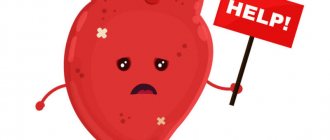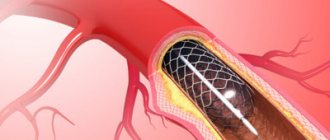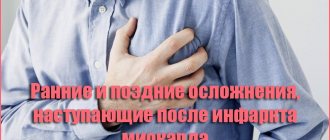Heart attack (a clinical form of cardiac ischemia) and smoking are interrelated. Even with the first puff, intravenous pressure increases and the heart muscle (myocardium) contracts. His infarction ( Latin infarcire “to start”, “to stuff” ) is necrosis of an organ, occurring due to the cessation of blood supply. The likelihood of such a condition increases significantly when smoking, because nicotine and other substances cause pathological changes in blood vessels and tissues.
Are electronic cigarettes a worthy replacement?
Modern times are characterized by many ways to replace smoking instead of giving it up completely. One such way is the use of electronic cigarettes. According to commercials and posters, unlike regular cigarettes, electronic cigarettes are absolutely harmless, but this is not the case. People who are overly addicted to this type of substitution of habitual smoking may often feel dizzy, nauseated, and vomiting. This is due to the fact that only 600 puffs, according to scientific research, are equivalent to 2 packs of smoked cigarettes.
The greatest threat in electronic cigarettes is the flavorings that are part of the liquid product. These components can cause an allergic reaction, which negatively affects the body as a whole.
The big danger is that, like regular cigarettes, electronic analogues cause diseases of the cardiovascular system and can provoke a second heart attack.
But electronic cigarettes contain liquids that contain nicotine in small quantities or not at all, which can help replace a “pacifier” for a person with severe mental or physical dependence. On the other hand, we should not forget about manufacturers of low-quality raw materials and the greed of people who will use harmful but cheap substitutes in liquids.
In general, it is better to avoid using e-cigarettes.
If a heart attack is knocking on a person’s door, you should forget about using regular and electronic cigarettes to protect yourself from sudden death and other diseases of the cardiovascular and respiratory systems. In more than 50% of people who had a heart attack and quit smoking, the electrocardiogram returned to normal.
Cancer: life after treatment. Diet, exercise, medications.
Proper nutrition plays an important role after an attack. The patient needs to eat a balanced, varied diet every day. Surely, even in the hospital, the victim was informed that he should not eat foods rich in cholesterol.
This is because coronary heart disease is mainly caused by high cholesterol levels. Fried and smoked foods, which contribute to the development of atherosclerosis, are prohibited. Adding the following products to the menu will help eliminate the risk of a recurrent attack:
- whole grain bread, cereals;
- fruits up to 200 grams per day (banana, kiwi, pear, melon, apple, orange, plum);
- legumes up to 400 grams per day;
- lean meat and fish in moderation, seafood;
- milk and fermented milk products, but only low-fat;
- chicken protein and yolk weekly up to three times;
- vegetable and olive oil.
Remember that life does not end after a heart attack, and it is in your power to make it full and rich.
Stenting of blood vessels, especially the coronary arteries, is an important operation that alleviates the patient’s condition. It helps to avoid serious complications and helps restore blood flow.
The decision on surgical intervention is made by the doctor, but not everyone can afford it due to the considerable cost.
You need to make an effort to do it, otherwise it could cost your life. Of course, the operation will only be beneficial if you follow a diet and physical activity during the rehabilitation period
It is very important to monitor the condition of the body, then a good result will be visible.
The second extremely important component of therapy is diet.
Diet therapy after stenting of coronary vessels should be based on the following principles.
- Limitation of animal fats in the diet. This means reducing the consumption of foods such as fatty meats (lamb, pork), lard, processed foods, margarine. You should not eat butter, cheeses, sour cream, or cream in large quantities. It is also worth limiting your egg consumption to 3-4 eggs per week. All fatty foods are future cholesterol plaques that will resume the symptoms of IHD after stenting.
- Limit refined carbohydrates and sweets. From the foods that are often on your table, you will have to cross out sweets (it is better to replace them with dried fruits), excess sugar, pastries, carbonated drinks, etc. In the body, carbohydrates are converted into fats, which is why you should avoid sweets as much as possible.
- Limiting salt. It causes fluid retention and increased blood pressure. Many patients with coronary artery disease who undergo stenting have hypertension. They should pay particular attention to this recommendation. The amount of salt should be reduced to 3-4 g per day (half a teaspoon). Be careful: many prepared foods (canned food, bread, etc.) contain salt, so you should limit its consumption more or less depending on what foods are present in your diet.
- Limiting the consumption of coffee and other drinks and products containing caffeine (strong tea, chocolate, cocoa). Caffeine causes vasospasm and increased heart function, which creates increased stress on the cardiovascular system and harms patients with coronary artery disease and stenting. However, it is worth understanding: the diet does not require a complete abstinence from coffee; with controlled blood pressure and the absence of severe symptoms, it can be consumed in small quantities. It is better to choose natural Arabica beans - they have less caffeine than robusta and, especially, than instant coffee.
- Adding vegetable oils, fresh vegetables and fruits, fish to the diet (consume at least 2 times a week). All this prevents the development of atherosclerosis. Dietary fiber from plant foods binds and removes cholesterol from the intestines, omega-polyunsaturated fatty acids from fish and vegetable oils reduce the content of harmful lipids (low-density lipoproteins, triglycerides) in the blood and increase the content of beneficial ones (high-density lipoproteins).
Why is nicotine dangerous?
Nicotine is the main active element of tobacco. This is a dangerous alkaloid that is quickly addictive and addictive, which is very difficult to get rid of. Nicotine is a potent cardiotoxin, neurotoxin, and psychostimulant.
Nicotine addiction develops very quickly. It develops in both physiological and psychological forms. Physiological dependence on the intake of nicotine into the smoker’s body is expressed in the form of nicotine withdrawal syndrome, which is similar to drug withdrawal.
With acute physiological dependence on smoking, withdrawal syndrome begins. This can cause an acute attack of hypertension, heart rhythm disturbances, shortness of breath and other abnormalities that provoke the development of myocardial infarction, especially secondary.
Psychological dependence on nicotine is expressed in the fact that, according to the smoker, a cigarette helps relieve the effects of stress and reduce the level of unpleasant experiences and emotions. Psychological dependence on smoking leads to a constant increase in the daily dose of nicotine. An increase in the number of cigarettes smoked has a negative impact on the cardiovascular system. As a result, the risk of myocardial infarction increases significantly. In addition, under the influence of nicotine, the permissible level of cholesterol and adrenaline in the smoker’s body increases.
What happens if you ignore the danger
When smoking, the reoccurrence of vascular pathologies increases significantly.
A similar picture is observed after a myocardial infarction or arterial stenting surgery. The combination of these bad habits is especially dangerous. A short-term dilation of the arteries under the influence of alcohol is replaced by an uncontrolled narrowing of them under the influence of nicotine from cigarettes. Such changes in the condition of the cerebral vessels or arteries of the heart occur when the patient begins to smoke, creating conditions for the formation of blood clots, bleeding of tissue areas, repeated cerebrovascular accidents, and myocardial infarction. The danger is increased by the dose of toxic substances introduced with alcohol or tobacco smoke if a person continues to smoke cigarettes.
You can draw your own conclusion. All attempts to continue smoking after a stroke, myocardial infarction, or vascular stenting will lead to the same result. There will be a high risk of recurrent vascular accident or sudden death. No less dangerous is drinking alcohol.
conclusions
So is it possible to smoke after a myocardial infarction? Doctors answer this question: “smoking after such an illness is strictly prohibited!” If you want to live, listen and follow these recommendations!
DO YOU WANT TO QUIT SMOKING?
Then you need a strategy for quitting cigarettes. With its help it will be much easier to quit.
Many smokers, unfortunately, do not even think about how interconnected smoking is with myocardial infarction and other diseases of the cardiovascular system, respiratory system, and central nervous system.
Smoking is not just a bad habit. This is a dangerous addiction in which systematic poisoning of the body with nicotine and other harmful substances occurs. Therefore, myocardial infarction occurs more often in people who smoke, and its form is much more severe than in those who are not addicted to cigarettes.











